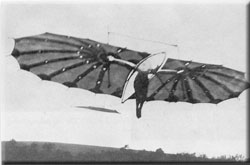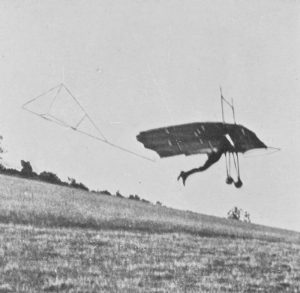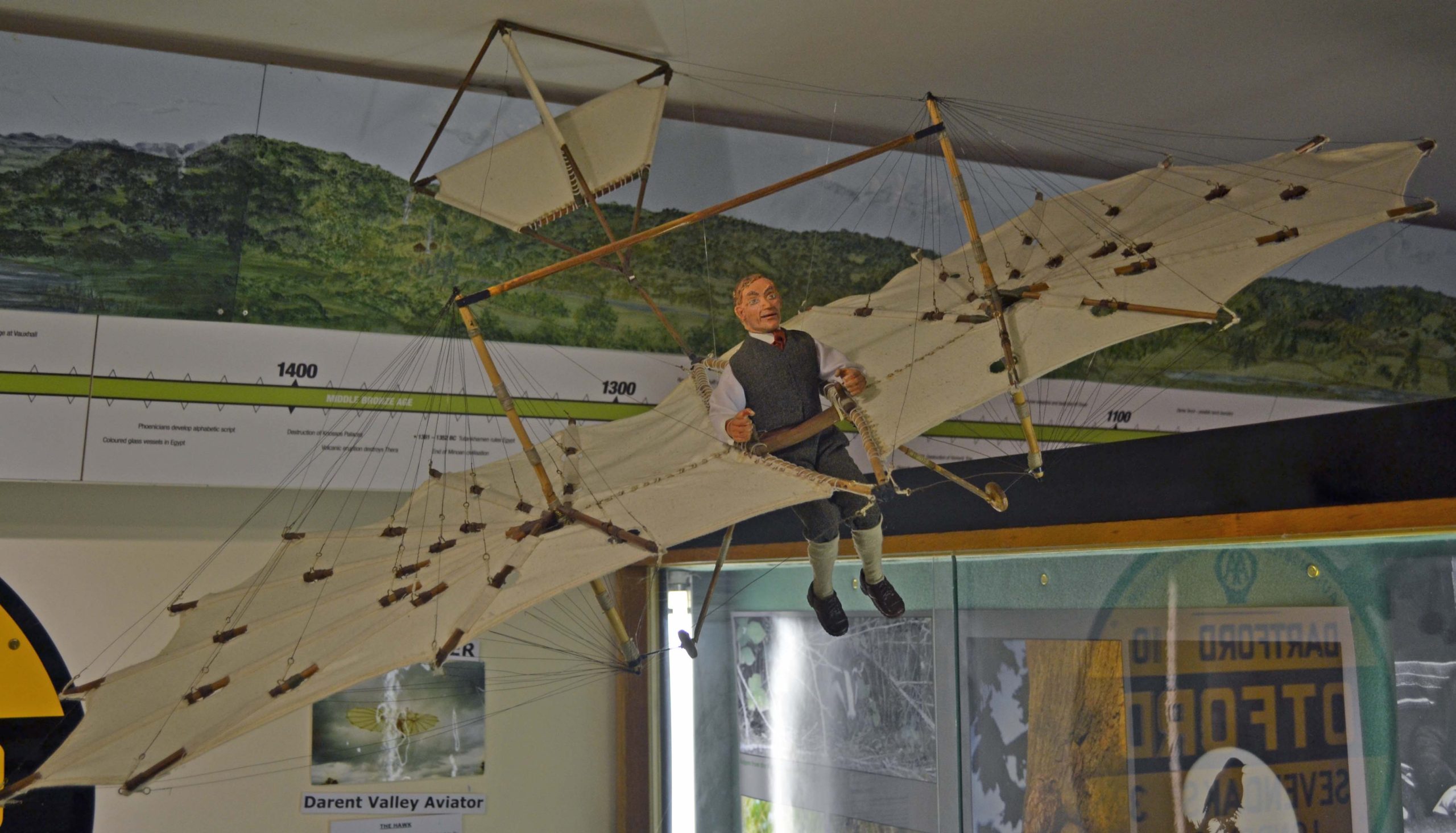A model of Percy Pilcher and his Hawk hang glider 1899. Watch more on YouTube.
The 30th September 1899 was a damp day. At his wealthy friend’s home in Stanford Park, Percy Pilcher was persuaded to make a final demonstration flight of the Hawk to a gathering of financiers. The triplane was already built. The new internal combustion engine was being bench tested and this short demonstration would hopefully release the funds that would lead to him achieving his goal.
On the first two attempts the lightweight towline snapped. Percy landed safely and remarked that the damp air had made the fabric heavier than usual. In the third flight be achieved 50-60’ above the ground when there was a sharp ‘snap.’ A tail spar had broken and the craft somersaulted to the ground. Percy, with severe concussion and a fractured left femur never regained consciousness and died at 3am two days later on 2nd October. He was just 32 years old.
He was the first true aviator of the United Kingdom. Just two years later in Kitty Hawk, North Carolina, the Wright Brothers were awarded the accolades that might have been Percy’s. They always acknowledged their debt to the pioneering work of England’s Percy Pilcher. (with acknowledgement to Phillip Jarrett)
In 2003, a film company TV6, in collaboration with aerial historian and Cranfield University, completed a television programme for BBC Horizon. They demonstrated a reproduction of the Hawk in flight and then built a full-sized reproduction of Percy’s bi-plane. Powering it with a 5bhp engine, they demonstrated that, after development, it was certainly capable of powered flight and could have catapulted Percy into history as the creator of the world’s first successful powered flight.
A stone monument to him stands in the field near Stanford Hall at the point where he crashed, and a full-sized replica of his “The Hawk” glider is also displayed at Stanford Hall. The original Hawk has survived and is in the collections of National Museums Scotland. Another full-size replica of the Hawk can be seen in the Duxford AirSpace hangar.
Eynsford, like Kitty Hawk, could have been known by future generations as the cradle of modern air travel.


Item Features
| Object Number | T-170221-01 |
| Number of objects | 1 |
| Alternative marking | None |
| Significance to the collection | Highly significant. Relates to the 19C history of the Darent Valley |
| Completeness | Complete |
| Maker | Rod Shelton |
| Place of Manufacture | Otford |
| Year of Manufacture or Origin | 2002 AD |
| Date Acquired | 30/04/2002 |
| Significance to the Collection | Highly significant. Relates to the 19C history of the Darent Valley |
| Storage and Display Requirements | Needs cleaning |
| Condition of Holding | Loan |
| Object Owner | Rod Shelton |
| See also: | Model |
